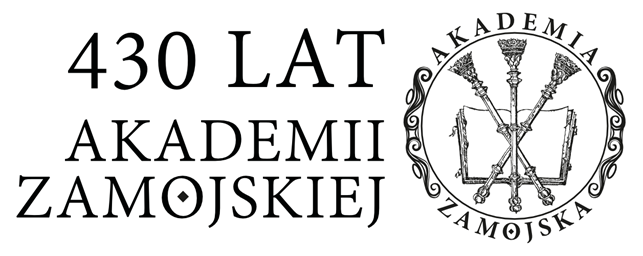Beeton S. (2005): Film-Induced Tourism. Clevedon, Channel View Publications.
DOI: https://doi.org/10.21832/9781845410162
Beeton S. (2010): The Advance of Film Tourism. „Tourism and Hospitality Planning & Development”, nr 7 (1), s. 1–6.
DOI: https://doi.org/10.1080/14790530903522572
Beeton S. (2011): Tourism and the Moving Image — Incidental Tourism Promotion. „Tourism Recreation Research”, nr 36 (1), s. 49–56.
DOI: https://doi.org/10.1080/02508281.2011.11081659
Buchmann A. (2010): Planning and Development in Film Tourism: Insights into the Experience of Lord of the Rings Film Guides. „Tourism and Hospitality Planning & Development”, nr 7 (1), s. 77–84.
DOI: https://doi.org/10.1080/14790530903522648
Busby G., Klug J. (2001): Movie-Induced Tourism: The Challenge of Measurement and Other Issues. „Journal of Vacation Marketing”, nr 7 (4), s. 316–322.
DOI: https://doi.org/10.1177/135676670100700403
Butler R.W. (1990): The Influence of the Media in Shaping International Tourist Patterns. „Tourism Recreation Research”, nr 15 (2), s. 46–53.
DOI: https://doi.org/10.1080/02508281.1990.11014584
Carl D., Kindon S., Smith K. (2007): Tourists’ Experiences of Film Locations: New Zealand as „Middle-Earth”. „Tourism Geographies: An International Journal of Tourism Space, Place and Environment”, nr 9 (1), s. 49–63.
DOI: https://doi.org/10.1080/14616680601092881
Cohen E. (1986): A Phenomenology of Tourist Experiences. „Sociology”, nr 13 (2), s. 179–201.
DOI: https://doi.org/10.1177/003803857901300203
Connell J. (2005): Toddlers, Tourism and Tobermory: Destination Marketing Issues and Television-Induced Tourism. „Tourism Management”, nr 26 (5), s. 763–776.
DOI: https://doi.org/10.1016/j.tourman.2004.04.010
Connell J., Meyer D. (2009): Balamory Revisited: an Evaluation of the Screen Tourism Destination-Tourist Nexus. „Tourism Management”, nr 30 (2), s. 194–207.
DOI: https://doi.org/10.1016/j.tourman.2008.06.001
Croy W.G., Heitmann S. (2011): Tourism and Film. [w:] P. Robinson, S. Heitmann i P.U.C. Dieke (red.): Research Themes in Tourism, Wallingford, CABI International.
DOI: https://doi.org/10.1079/9781845936846.0188
Economic and Fiscal Impacts of the New Mexico Film Production Tax Credit. Prepared for the New Mexico State Film Office and State Investment Council. January 2009, Ernst & Young, [@:] http://www.southwindsor.org/sites/southwindsorct/files/uploads/ernst_and_young_new_mexico_film_production_tax_credit_study.pdf.
Edensor T. (2001): Performing Tourism, Staging Tourism (Re)producing Tourist Space and Practice. „Tourist Studies”, nr 1 (1), s. 59–81.
DOI: https://doi.org/10.1177/146879760100100104
Hudson S. (2006): Promoting Destinations via Film Tourism: an Empirical Identification of Supporting Marketing Initiatives. „Journal of Travel Research”, nr 44 (4), s. 387–396.
DOI: https://doi.org/10.1177/0047287506286720
Jones D., Smith K. (2005): Middle-Earth Meets New Zealand: Authenticity and Location in the Making of the Lord of the Rings. „Journal of Management Studies”, nr 42 (5), s. 923–945.
DOI: https://doi.org/10.1111/j.1467-6486.2005.00527.x
Kim S.S., Agrusa J., Chon K., Cho Y. (2008): The Effects of Korean Pop Culture on Hong Kong Residents’ Perceptions of Korea as a Potential Tourist Destination. „Journal of Travel & Tourism Marketing”, nr 24 (2–3), s. 163–183.
DOI: https://doi.org/10.1080/10548400802092684
Kucharska S. (2012): European Union’s Founds as an Opportunity to Promote Film Tourism: the Polish Case. BITCO 2012. 1st Belgrade International Tourism Conference 2012 Contemporary Tourism — Wishes and Opportunities, 2012.03.22–24, Belgrade.
Leotta A. (2011): Touring the Screen. Tourism and New Zealand Film Geographies. Bristol, Intellect.
Mordue T. (2001): Performing and Directing Resident/Tourist Cultures in Heartbeat Country. „Tourist Studies”, nr 1 (3), s. 233–252.
DOI: https://doi.org/10.1177/146879760100100302
Peaslee R.M. (2011): Approach to Media Power One Ring, Many Circles: the Hobbiton Tour Experience and a Spatial Approach to Media Power. „Tourist Studies”, nr 11 (1), s. 37–53.
DOI: https://doi.org/10.1177/1468797611412063
Riley R., Baker D., Van Doren C.S. (1998): Movie Induced Tourism. „Annals of Tourism Research”, nr 25 (4), s. 919–935.
DOI: https://doi.org/10.1016/S0160-7383(98)00045-0
Shim D. (2007): Korean Wave and Korean Women Television Viewers in Singapore. „Asian Journal of Womens Studies”, nr 13 (2), s. 63–82.
DOI: https://doi.org/10.1080/12259276.2007.11666025
Stasiak A. (2009): Turystyka literacka i filmowa. [w:] K. Buczkowska i A. Mikos Von Rohrscheidt (red.): Współczesne formy turystyki kulturowej, Monografie, t. 391, Poznań, Akademia Wychowania Fizycznego w Poznaniu.
Urbaniak J. (2009): Turystyka filmowa w Polsce. Mrzonka czy szansa na rozwój gospodarczy wybranych regionów? [w:] K. Szpara i M. Gwóźdź (red.): Przestrzenne, gospodarcze i humanistyczne aspekty turystyki, Kraków-Rzeszów-Zamość, Konsorcjum Akademickie — Wydawnictwo WSE w Krakowie, WSIiZ w Rzeszowie i WSZiA w Zamościu.
Urbaniak J. (2010): Turystyka filmowa specyficznym produktem turystycznym w Polsce i na Świecie. [w:] D. Orłowski i E. Puchnarewicz (red.): Turystyka kulturowa a regiony turystyczne w Polsce, Warszawa-Kraków, Wyższa Szkoła Turystyki i Języków Obcych; Wydawnictwo Libron — Filip Lohner.
Urry J. (1990): The Tourist Gaze. Leisure and Travel in Contemporary Societies. London, Sage.
Young A.F., Young R. (2008): Measuring the Effects of Film and Television on Tourism to Screen Locations: a Theoretical and Empirical Perspective. „Journal of Travel & Tourism Marketing”, nr 24 (2–3), s. 195–212.
DOI: https://doi.org/10.1080/10548400802092742



 English
English
 Język Polski
Język Polski




